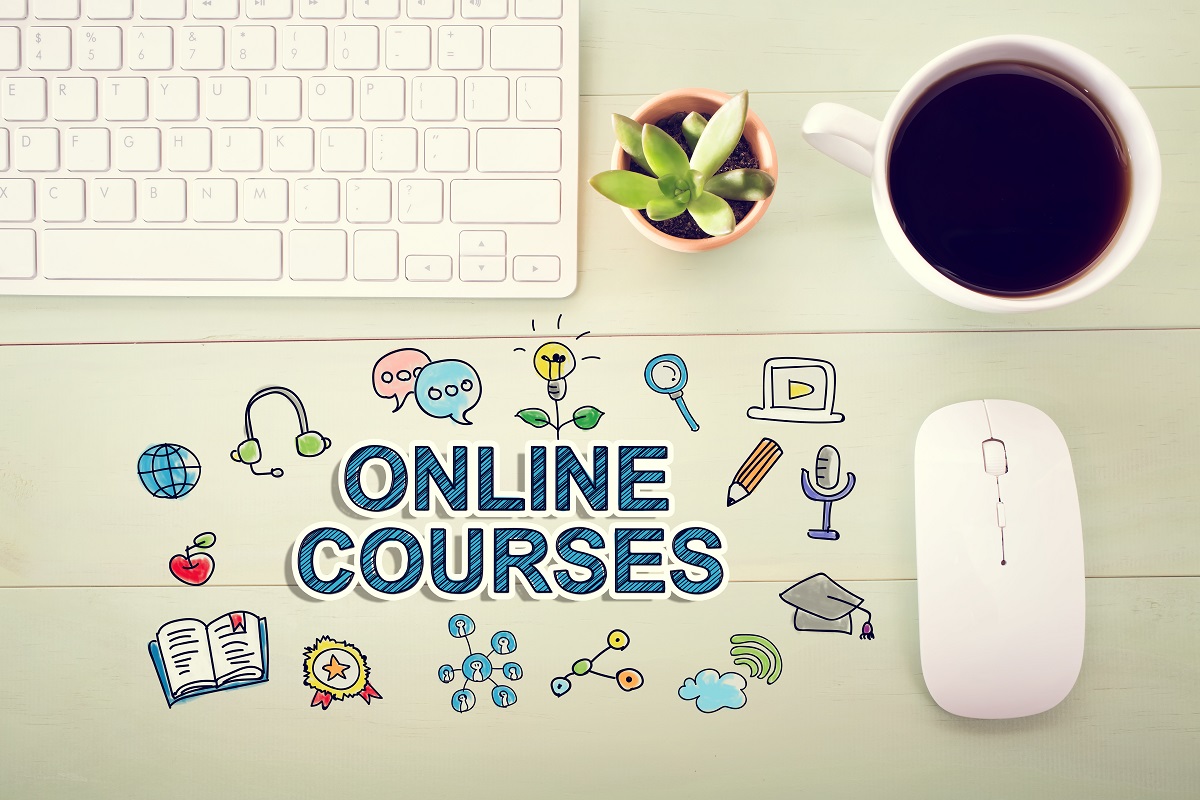3 easy steps to enter our virtual classroom:
- 1. Fill the short form on our website Book test lesson
- 2. We will contact you, give more information about the lessons and book the first test lesson.
- 3. Go online, enter our classroom and watch the lesson.



WHY DO STUDENTS ENJOY OUR LESSONS?
Convenience: everything is online and there's no need to leave your house!
Quality of the video and sound is very high. You feel like you were in a real classroom!
Professionalism of our teachers. You will notice a difference with every lesson.
ABOUT OUR LESSONS?
- We connect via ZOOM, a professional app, which provides high quality picture and crystal clear voice.
- You are in a small group (up to 4) of students with a live teacher throughout the whole lesson.
- One lesson lasts 50 minutes. As standard we offer 2 lessons twice a week.
- Lessons are in the morning, during the day or in the evening as well as on Saturdays. We also organise lessons for those working shifts.
- One lesson costs £5.50 or €6
- Our lessons prepare you for examinations such as: IELTS, GCSE, Cambridge ESOL or Citizenship.
Book test lesson!



| Day | Available hours |
|---|---|
| Mondays and Wednesdays/Thursdays | 8:30 - 10:20 10:30 - 12:20 12:30 - 14:20 16:00 - 17:50 18:00 - 19:50 20:00 - 21:50 |
| Tuesdays and Fridays | 8:30 - 10:20 10:30 - 12:20 12:30 - 14:20 16:00 - 17:50 18:00 - 19:50 20:00 - 21:50 |
| Saturdays |
9:00 - 11:50 12:10 - 15:00 |

1. INTRODUCTION
Since the main methodological assumptions of the direct method are over 100 years old, we are currently using yet another embodiment of this method in the teaching of foreign languages, which has evolved along with developing the methodology in conjunction with students needs and expectations. The direct method is fast and efficient, allowing everyone to achieve noticeable results. It can be said that the main objective of the direct method is to teach the skill of communication in a foreign language through minimizing the use of the mother tongue during the lesson, as well as through training linguistic reflexes. This leads to thinking in the target language, and hence, the ease of using the target language in practice is gained.
2. LISTENING and SPEAKING
The direct method puts strong emphasis on practice and oral training listening and speaking. About 80% of lesson time is oral practice with the teacher consisting of a controlled dialogue in which the teacher asks questions based on previously introduced vocabulary and grammar. In this way, the new material is learned both in practice and in proper context. The best way of learning a language is simply through speaking it. Students take part in the lesson actively, answering their teachers questions in a full form, so as to extend the speaking time and practise as many words and grammar structures as possible. To sum up, vocabulary is of more importance than grammar, and the most important is speaking.
3. LESSONS IN A FOREIGN LANGUAGE
Language lessons by means of the direct method are conducted almost exclusively in a foreign language. Instructions are given by the teacher in a foreign language. The teacher also avoids translation into the students language. In further parts of the lesson, the new questions include currently introduced vocabulary or grammar, whereas the rest of the material is already familiar to the student from previous lessons. We learn a foreign language in a similar way to a child learning his or her first language. Students first hear words, then they repeat them imitating the teachers pronunciation, and only afterwards do they learn how to spell them by reading and writing.
4. LINGUISTIC REFLEXES
In order to develop proper linguistic reflexes, one should speak fast and without thinking. Thus, the habit of thinking in ones own language and translating into a foreign language which significantly hinders listening comprehension and speaking in a natural way is eradicated. Almost the whole lesson is devoted to oral practice with the teacher consisting of teaching new vocabulary and grammar items and then asking questions in which the new vocabulary and grammar structures are incorporated, so that all of the new material is learned in practice and in context. We teach everyday-use vocabulary from the beginning of the course with particular reference to the most commonly used words in the spoken language.
5. QUESTIONS and ANSWERS
Asking questions and answering them in small groups of students is probably the most commonly known way of learning for centuries. An intensive exchange of questions and answers between the teacher and the student serves the objective of mastering linguistic habits. The student gains automaticity of answers thanks to the imitation of full phrases and sentences. Questions and answers in the first stages of learning are pre-defined and neither the teacher, nor the student should diverge from the pattern. The student practises the exact words and grammar structures which are incorporated into the questions and answers. In further stages of learning, elements of independent creation by the student are introduced, and the student can create more and more independent answers. In all our coursebooks we use a large number of interesting questions using natural, contemporary language. Hence, the students can better remember new vocabulary and use it in more numerous contexts (various applications, grammar structures, collocations). As a result, they can use a foreign language in a more creative way rather than just mechanically memorizing single sentences.
6. ACCURACY
The teacher puts strong emphasis on the accuracy of the answers in terms of pronunciation, vocabulary and grammar, which fosters proper linguistic habits, and also motivates students to pay attention to producing flawless sentences. It is of crucial importance to speak independently from the very beginning, even if it involves making mistakes. Obviously, mistakes should be immediately corrected by the teacher in a friendly way, so that the student can learn through repeating the correct form. The knowledge of grammar rules comes with time: we learn the necessary grammar items during the lesson, practising them in sentences, whereas, from time to time there are grammar lessons fully devoted to the consolidation and explanation of grammar.
7. REVISION OF MATERIAL
Language learning is faster and much more efficient thanks to regular revision. In the direct method, a significant amount of lesson time is devoted to a strictly organized revision of material; hence, students remember numerous vocabulary and grammar items fast and for longer. The pre-defined system of revision involves students multiple contact with each part of the material starting from revision at the beginning of each lesson, through readings and grammar lessons, to revisions of greater parts of material before exams. Extensive revision is the secret of success in learning a foreign language. Language learning mainly consists of training fast reflexes similar to those used in typing or playing the piano and such reflexes can only be trained through frequent revision.














